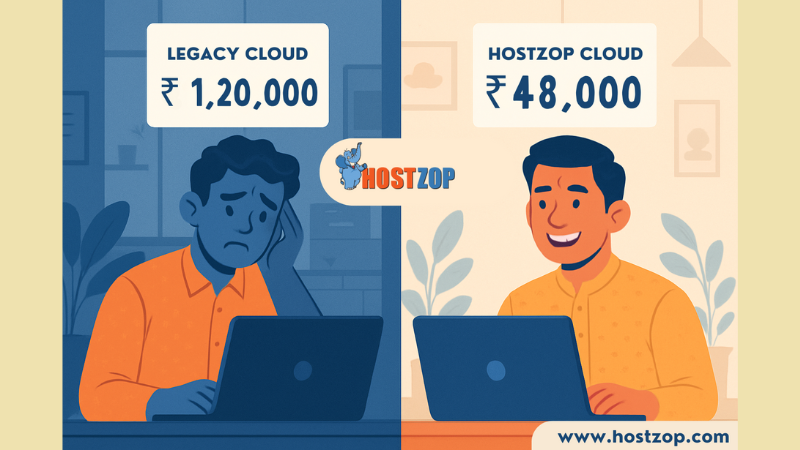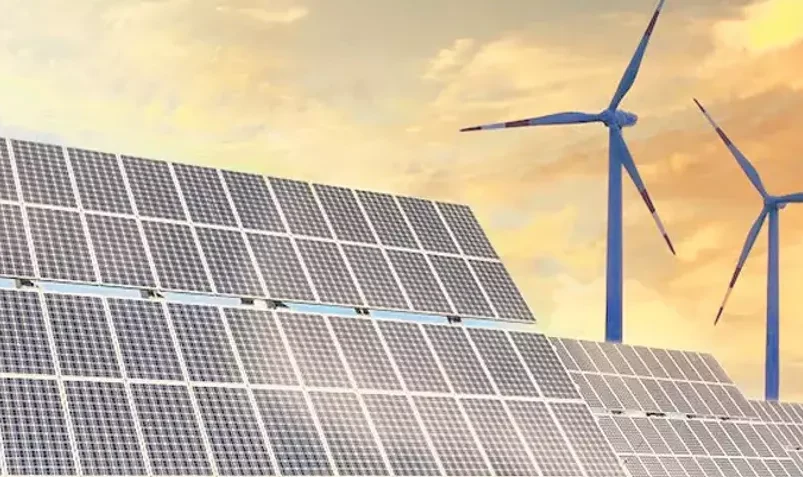India is at the forefront of the global movement towards sustainability and renewable energy, as the country seeks to balance its rapid economic growth with environmental protection. In 2024, India’s commitment to renewable energy is stronger than ever, with ambitious goals set for reducing carbon emissions, increasing clean energy production, and integrating sustainable practices across industries. The sustainability movement in India is not only a government-driven initiative but also a crucial business trend, as companies across sectors are increasingly focusing on eco-friendly practices to meet consumer demand and regulatory standards.
This article explores the key drivers behind India’s renewable energy boom, the challenges the country faces in its sustainability journey, and the emerging trends shaping the future of the energy sector.
India’s Push for Renewable Energy: A Vision for 2024
India is one of the world’s largest energy consumers, and with a population of over 1.4 billion, its energy demands are continually rising. Historically, the country has relied heavily on fossil fuels like coal and oil for its energy needs, contributing significantly to pollution and greenhouse gas emissions. However, in recent years, India has made a concerted effort to shift towards cleaner energy sources, and 2024 marks a pivotal year in this transition.
The Indian government has set ambitious targets under the National Action Plan on Climate Change and the Paris Agreement to achieve 500 GW of renewable energy capacity by 2030. As of 2024, India is on track to meet these targets, with solar and wind power leading the charge. The country’s renewable energy capacity has grown exponentially, making it one of the largest renewable energy markets in the world.
Key Drivers of Renewable Energy Growth in India
Government Initiatives and Policies
The Indian government has been a key driver of the renewable energy revolution through a range of policies and initiatives aimed at promoting clean energy. The National Solar Mission, launched in 2010, set an ambitious target of achieving 100 GW of solar power by 2022. While this target was not fully met, the initiative has significantly boosted solar energy production in India, with solar power capacity standing at over 60 GW as of 2023.
In addition to solar, the government’s focus on wind energy has resulted in significant capacity additions. The National Wind Energy Mission aims to add 60 GW of wind power capacity by 2025. Government incentives, such as tax benefits, subsidies for renewable energy projects, and the development of solar parks, have played a crucial role in attracting investments into the sector.
Growing Investment in Renewable Energy
India’s renewable energy sector has attracted substantial investment from both domestic and international sources. Global companies and investors see India as a key player in the global transition to clean energy, and the country’s large-scale renewable projects offer lucrative investment opportunities. In 2023 alone, India attracted over $15 billion in clean energy investments, with major contributions from companies like Tata Power, Adani Green Energy, and global players such as SoftBank and Brookfield Renewable Partners.
Technological Advancements
Technological advancements are also playing a significant role in boosting India’s renewable energy sector. Innovations in solar panel efficiency, battery storage solutions, and grid management are making renewable energy more cost-effective and scalable. The cost of solar power in India has fallen drastically, making it one of the cheapest sources of electricity in the country. Wind turbine technology has also improved, allowing for greater energy capture and reducing the levelized cost of wind power.
Corporate Commitment to Sustainability
As sustainability becomes a priority for consumers and regulators alike, Indian companies are increasingly committing to renewable energy and sustainable business practices. Corporations across various sectors, including IT, manufacturing, and retail, are investing in renewable energy to power their operations and reduce their carbon footprints. Companies like Infosys, Reliance, and Mahindra have pledged to achieve carbon neutrality in the coming decades, further driving the adoption of renewable energy.
The Role of Solar and Wind Power in India’s Energy Transition
Solar Power
India’s solar power capacity has grown exponentially in recent years, thanks to favorable government policies, declining technology costs, and an abundance of sunlight. Solar energy is expected to play a central role in India’s energy mix in 2024 and beyond, with large-scale solar parks, rooftop solar installations, and floating solar projects contributing to the country’s clean energy goals.
One of the largest solar projects in the world, the Bhadla Solar Park in Rajasthan, exemplifies India’s leadership in solar energy. Spread across 14,000 acres, the park has a capacity of over 2.2 GW and has helped propel India’s solar power generation to new heights. The development of solar parks like Bhadla is part of the government’s broader strategy to create large, centralized renewable energy hubs that can supply clean power to the grid.
Wind Power
India’s wind energy potential is significant, particularly in states like Tamil Nadu, Gujarat, and Karnataka, which have strong wind resources. The country’s installed wind power capacity stood at over 40 GW in 2023, and this is expected to grow further in the coming years. Offshore wind energy is also emerging as a new frontier for India, with plans to develop offshore wind farms along the Gujarat and Tamil Nadu coasts.
Wind energy, like solar, benefits from economies of scale and technological advancements. Modern wind turbines are more efficient, capable of generating electricity even at lower wind speeds, which increases the viability of wind energy projects in more regions of the country.
Challenges in India’s Renewable Energy Journey
While India has made impressive strides in renewable energy, several challenges remain that could impact the country’s ability to meet its sustainability goals:
Infrastructure and Grid Integration
One of the key challenges facing India’s renewable energy sector is the integration of intermittent energy sources like solar and wind into the national grid. Unlike traditional power plants, renewable energy generation is variable, depending on weather conditions and time of day. Ensuring a stable supply of electricity from renewable sources requires significant investments in grid infrastructure and energy storage solutions.
The lack of adequate transmission infrastructure in remote areas, where many of India’s solar and wind farms are located, also poses a challenge. Bottlenecks in transmission can lead to power curtailment, where excess energy generated by renewable projects goes unused.
Land Acquisition and Environmental Concerns
The development of large-scale renewable energy projects requires vast amounts of land, which can lead to conflicts with local communities and environmental concerns. Solar parks and wind farms often compete with agricultural land, leading to displacement and loss of livelihoods for farmers. Environmental concerns, such as the impact of wind turbines on bird populations and the destruction of natural habitats for solar installations, must also be addressed.
Financing and Policy Stability
While renewable energy has attracted significant investment, financing remains a challenge for smaller developers and less profitable projects. Uncertainty around government policies, changes in tariffs, and delays in project approvals can deter investors and slow down the pace of renewable energy development. Ensuring policy stability and clear regulatory frameworks will be crucial for sustaining investor confidence in the sector.
The Role of Sustainability in India’s Business Landscape
In addition to renewable energy, sustainability is becoming a central theme in India’s business landscape. As consumers become more environmentally conscious, businesses are under increasing pressure to adopt eco-friendly practices and reduce their environmental impact. This has led to the rise of environmental, social, and governance (ESG) frameworks, which are being adopted by companies across various industries to ensure sustainable business operations.
The Circular Economy
The concept of the circular economy is gaining traction in India, with businesses looking for ways to minimize waste, reuse materials, and promote recycling. The traditional linear model of “take, make, dispose” is being replaced by a circular model where materials are kept in use for as long as possible. Companies in sectors such as manufacturing, retail, and packaging are embracing circular economy principles to reduce their environmental footprint and create new business opportunities.
Corporate Social Responsibility (CSR) and ESG Initiatives
India’s corporate sector is increasingly aligning its goals with sustainability through CSR initiatives and ESG frameworks. Companies are investing in renewable energy, sustainable supply chains, and eco-friendly products to meet consumer expectations and comply with regulatory requirements. ESG reporting is becoming standard practice, with businesses disclosing their environmental impact, social initiatives, and governance structures to stakeholders.
Conclusion
Sustainability and renewable energy are at the heart of India’s efforts to build a greener, more resilient economy. As the country continues to invest in solar, wind, and other renewable energy sources, it is positioning itself as a global leader in the transition to clean energy. However, challenges related to infrastructure, financing, and environmental concerns must be addressed to ensure the long-term success of India’s renewable energy sector.
The growing emphasis on sustainability in India’s business landscape, from the adoption of ESG frameworks to the rise of the circular economy, reflects a broader shift towards responsible and eco-friendly business practices. As we move into 2024 and beyond, the focus on sustainability will only intensify, offering new opportunities for businesses and investors in the green economy.











